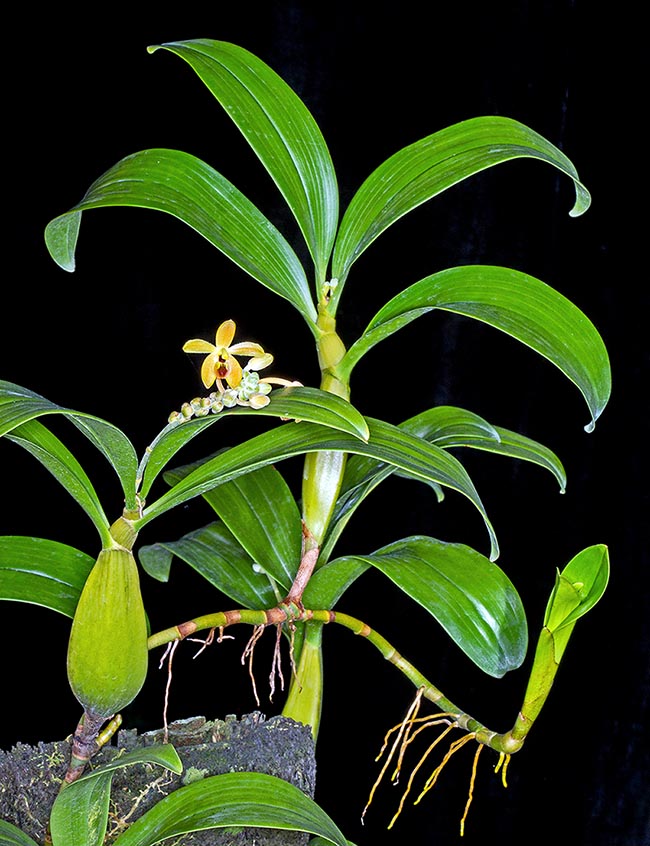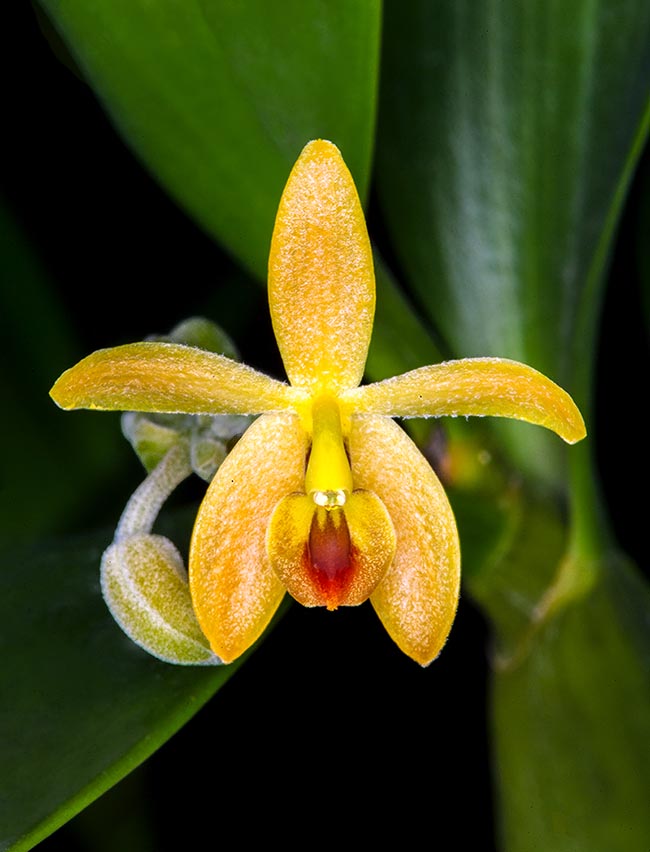Family : Orchidaceae

Text © Prof. Pietro Pavone

English translation by Mario Beltramini

Callostylis pulchella is an epiphyte orchid present from Indochina to central Malaysia © Giuseppe Mazza
Callostylis pulchella (Lindl.) S.C.Chen & Z.H.Tsi (1984) is a species of the family Orchidaceae, subfamily Epidendroideae, tribe Podochileae.
The native range of this species goes from Indochina to central Malaysia (Borneo, Java, Laos, Malaysia, Burma, Sulawesi, Sumatra, Thailand, Singapore).
In Malaysia and in Borneo, it grows in the coastal forests and in the moist ones of the hinterland including the heath forests (keranga), in the mangrove forests, close to the beaches and in the inland plain forests up to about 1000 m of altitude. In Java, it is found in the moist forests along the southern coast.
In Sumatra it is always found under the 1000 m of altitude. In Singapore, where it was thought to be extinct, it was discovered on Feb. 14th 2012 in the swamp forest of Nee Soon Swamp Forest (NSSF), the last strip of unaltered freshwater marsh of this city-state.
Thanks to this find it has been protected from the trade through the Washington Convention (CITES) that is intended to protect the animal and plant species under risk of extinction, hindering their trade and, particularly, their export and detention.
This species, initially included as a section in the genus Eria, is presently included in the genus Callostylis (1825) described by Carl Ludwig Blume (1796-1862), with five epiphytic species distributed from Himalaya and South China to Thailand, Indochina and western Malaysia.
The generic name Callostylis derives from the Greek words: τύλος (callus) and στύλος (stylos, column), in reference to the presence of a thickened callus on the gynostemium (or column) of the flowers of this genus. The specific epithet pulchella is the diminutive of the Latin pulcher with the meaning of beautiful and small, graceful.
Commonly known as “The Beautiful Eria”, Callostylis pulchella is an epiphyte orchid that covers, at times in a massive manner, the branches on which it grows. It has long, rigid, creeping rhizomes from which, spaced 6-10 cm, take form slightly flattened pseudobulbs, about 6 cm long and 2 cm broad.

It’s a species protected in nature bearing up to 15 about 3 cm broad flowers © Giuseppe Mazza
The pseudobulbs are erect, green, wrinkled and of yellow-green colour when ripe, with two or three close together leaves.
Their function is to store water and nutrients in order to support the plant during the drought stresses.
The plant also reduces the waste of water thanks to the photosynthesis of CAM (Crassulacean Acid Metabolism) type, a process that takes place with closed stomata opening only during the night for the gas exchanges (CO2, O2) with a minimum waste of water vapour.
The leaves are coriaceous, thin, up to 14 cm long and 2,5-3,4 cm broad.
From the pseudobulbs originates the spike inflorescence that is shorter than the leaves and is covered by a thick white down.
Each inflorescence may have up to 15 flowers opening as the inflorescence gets longer.
The flowers are of dull orange colour, yellow, usually of about 3 cm of diameter with lanceolate sepals, 15 mm long and 6 mm broad, with short hairs on the upper surface. The petals are slightly larger and narrower than the sepals.
The labellum is flexible, almost circular and slightly toothed at the extremities, brown with a big callus, smooth, central that gets thicker towards the apex and divides into three crests.
The column is curved, slender and about 7 mm long, with a very short foot, wrinkly of yellow or brown colour. The pollinia are clavate, in number of eight, almost the shame in shape and size.
When cultivated this plant requires warm temperatures and little lighting. Waterings are to be done twice or thrice a week, allowing the substratum to dry up between one watering and the other. The loam must be quite draining like, for instance, fir bark with addition of perlite or sphagnum moss.
Synonyms: Eria pulchella Lindl. (1841); Tylostylis pulchella (Lindl.) Ridl. (1915).
